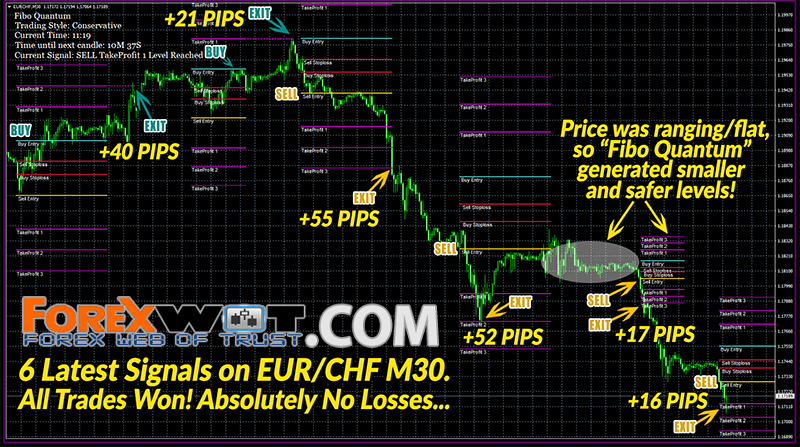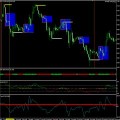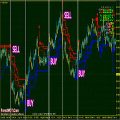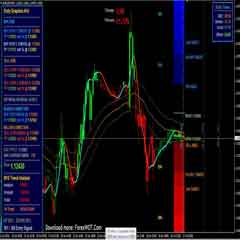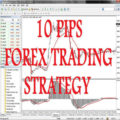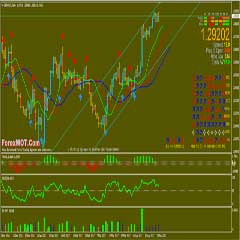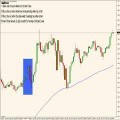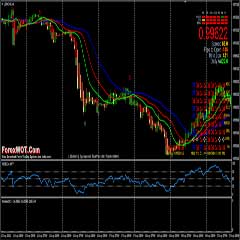Forex Trading Is A Serious Business. Forex trading must be seen as a serious business, not just a casual roll of the dice or a leisurely pursuit. If you approach trading as a means of getting your dose of adrenaline, do yourself a favour by staying away from it – you will do less harm to your pockets by going to the latest Louis Vuitton sale or by bidding on that vintage car on eBay for the adrenaline shot.

Serious money demands serious work. Winners from the trading arena take a nononsense approach to trading – they take care of their P&L (profits and losses), enter only into high probability trades and keep meticulous record of all their trades.
Both serious and casual traders, of course, dream of making it big in the forex market, but it is not the goal that counts, it is the preparation and dedication that is important. Forex trading should be considered and treated as a serious business, just like other types of businesses. Approaching trading from the perspective of a shrewd business person can greatly tilt your chances of success to your side.
An alarm from my computer rings. Jolted from sleep, I drag my feet – with eyes half-open – into my trading room. I turn on the LCD monitors and look immediately at the screen showing the 5-minute chart of GBP/USD. The time is 2:10am and the FOMC minutes have just been released. GBP/USD has fallen by around 40 pips so far to 1.9730 – an intraday low.
I click on the headline which summarises what the minutes say. It seems that the Fed’s main concern is that inflation will fail to moderate as expected, and that future policy adjustments will depend on incoming economic data.
This statement is very similar to the previous one; hence there is not much reaction in the forex market. Both EUR/USD and USD/CHF barely move more than 20 pips.
I wait a few more minutes to see how the price action in GBP/USD will unfold, but when I see that the currency pair is losing momentum, I switch off the monitors and go back to bed. The price is not where I want to buy GBP/USD.
Too soon, morning comes. I start off the day by having breakfast in front of one of my computers, looking at screens that show the 5-minute charts USD/CHF, EUR/USD, USD/JPY and GBP/USD. These four currency pairs (also known as “majors”) are what I usually check out the first thing in the morning, unless I’ve got a position open in other currency pairs.
I quickly scroll through the news headlines that are displayed in the news feeds, and select those which relate directly to forex. Sometimes there are tons of press reports to read, other times there isn’t much, and today there is a sprinkle of reports written by financial news journalists who are all trying to dissect what the Fed is up to.
The analysis that I had done yesterday threw up some significant support and resistance levels in USD/CHF, and since I’m not expecting any big price breakouts in the meantime, I place some limit orders near them.
Free Download Trading System:
As much as I am eager for some fast-moving actions in the market, most currency pairs still haven’t moved much during the time I was asleep, since the release of FOMC minutes several hours ago.
The market seems pretty boring at this time. The lull in market activity gives me some time to write a bit more of this book, and to work on some trading articles.
Later on, just as I am getting ready to go out for lunch with a friend, I see that USD/CHF is moving up toward a specific resistance level, and my short position (to sell-short instead of buying) could be open very soon.
To make sure the trade is still sound, I quickly check the news feeds to see if any news or rumours might have triggered this move.
As it moves closer to my price point, I decide to leave the short order in place as the move doesn’t seem to be triggered by any news. The market is moving up and closer to my position; it is now only one pip away. I make sure all my charts are up, and I prepare to monitor this trade. Suddenly, USD/CHF seems to move down. I wonder if I’ve missed the opportunity. It is now 12 pips away from my opening price, a bit too late for me to get in.
And just as suddenly as the price has gone down, it is now moving up again and my order is now filled. It seems I haven’t missed out on the move after all. Now my only fear is that USD/CHF could break out successfully from that resistance point. The pair keeps moving up, 5 pips then 10. I am now in loss, but I’m not too worried since the actual resistance point hasn’t been reached yet as it is still 5 pips away.
The up move on USD/CHF seems to be slowing down a bit. I guess others must be going short too. After what seems like an eternity, but is probably no more than five minutes, my position is back at break-even, which means I have neither made nor lost money at this point.
This bounce trade seems to be taking a while, so I call my friend to let her know we will have to postpone our lunch meeting. Lunch will have to arrive in the form of junk food from my favorite food delivery outlet. Sometimes I watch my open trade like a hawk; other times, I simply continue with other activities.
I set some price alarms and get back to writing my book while waiting for my lunch. After all, it is usually better to do something else while waiting on the market. That way, a trader won’t feel as bored and it prevents him or her from trading out of boredom.
After lunch, the alarms ring. I look at the charts and see that USD/CHF is moving down sharply. Looks like I am close to reaching my profit target. Institutional traders must be back from lunch and are taking profits on their long positions. Finally, to my delight, within the next half hour, my short USD/CHF trade reaches the profit objective.
With this trade out of the way, I look for upcoming trading opportunities. They are all quite far from the current price, so I embark on the regular routine of blogging on my website about the latest developments in the market and their implications, and capture some chart screenshots to include in the post.
Trading blogs, especially those that have fresh and relevant material, can be a valuable source of useful and targeted information for busy traders who hold day jobs. This blogging habit, which constitutes part of my market homework, has helped me in my own trading.
I also take the time to interact with the online community of traders by participating in forums such as that as ForexVibes. Trading is unlike a 9-to-5 job; there isn’t a fixed time for the start or the end of my daily trading activities. This means that sometimes I will end past midnight, and other times I will be done well before lunch time.

